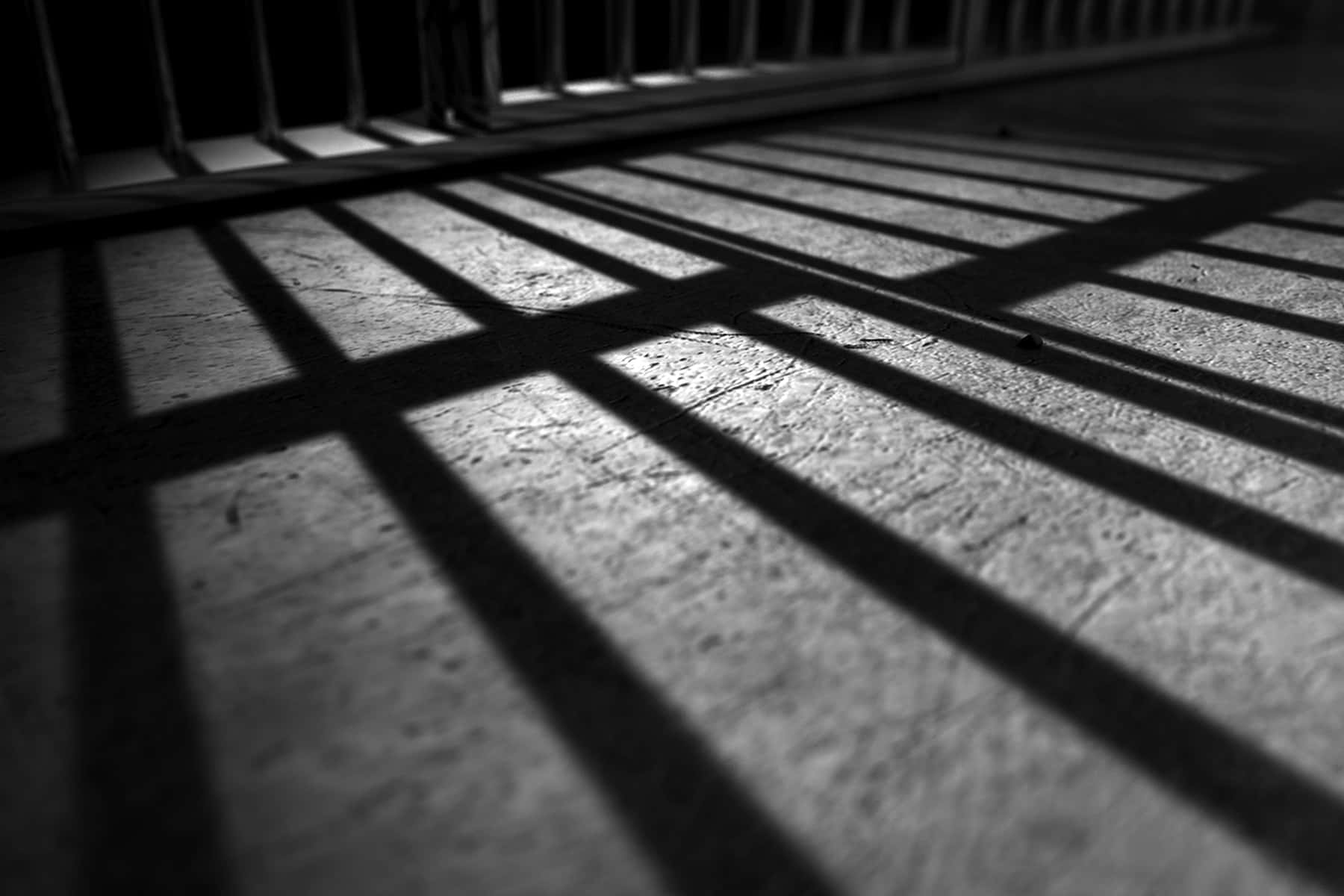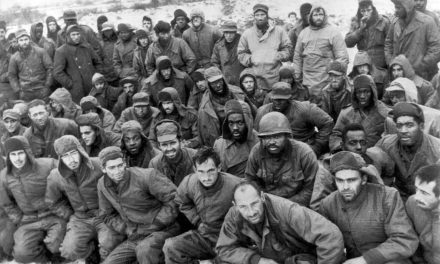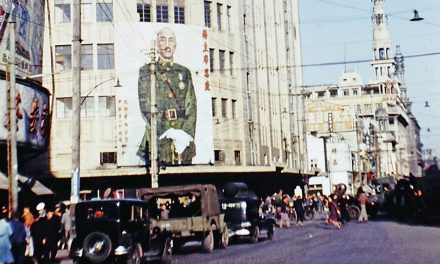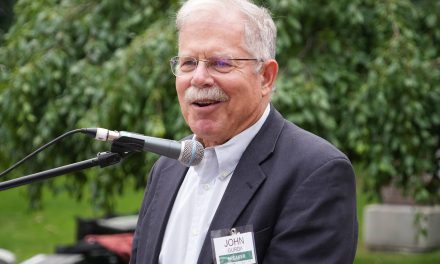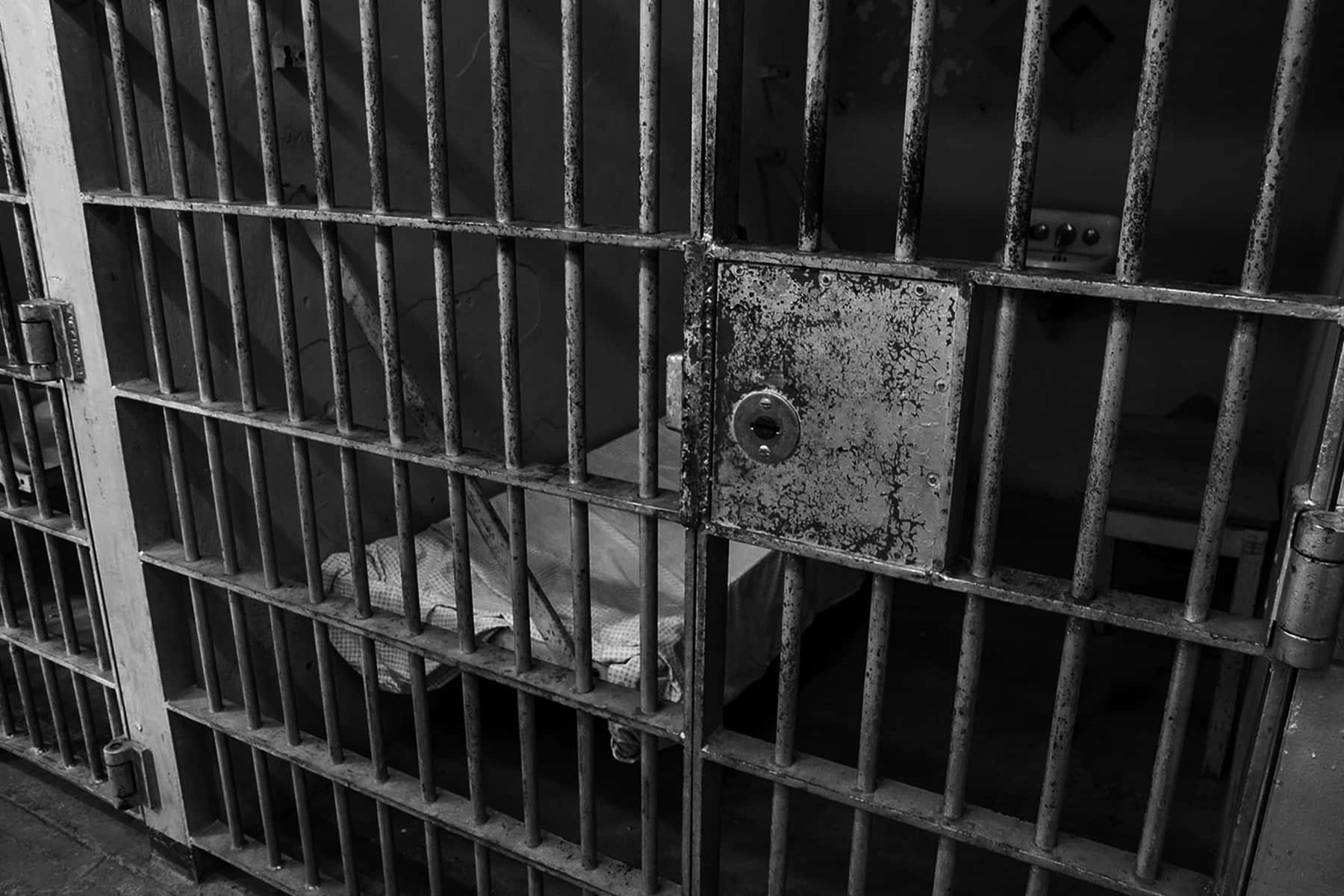
This column is part of the special series From Mississippi to Milwaukee: My Journey to 53206 by Reggie Jackson, that explores the 53206 zip code of Milwaukee in an effort to educate about the historical context and social process that drove the once thriving part of the city into its current problematic condition.
“The prison population in Wisconsin has more than tripled since 1990. Wisconsin has the highest black male incarceration rate in the country. Half of African American men in their 30s in Milwaukee County have been in state prison.” – ROC Wisconsin, A Project of WISDOM
Wisconsin has the dubious distinction of incarcerating black men at the highest rate of any state in the nation. What many do not know is that we have the second highest black incarceration rate overall, if you include black women as well. Many of those incarcerated come from Milwaukee.
Many people have stated that 53206 zip code has the highest incarceration rate of any zip code in the country. According to Mark Levine of the UW-Milwaukee’s Center for Economic Development, this is not true. “Although incarceration and ex-offender rates in 53206 are staggeringly high, there is no evidence that these rates are the highest in the nation.”
Once it is said enough times it becomes the truth for many. Former British Prime Minister Winston Churchill famously stated, “A lie gets halfway around the world before the truth has a chance to get its pants on.” The statement about 53206 was never checked by anyone to see if it was indeed the truth.
Wisconsin has a serious problem with over-incarceration. We also have the highest incarceration rate for Native Americans as well. We send an inordinate number of people to prison each year. Wisconsin’s prison population stood at 23,441 as of April 12, according to the Wisconsin Department of Corrections weekly population reports. 65,383 individuals are on some form of supervised release such as probation, parole, or extended supervision.
No community has seen the impact of incarceration to the extent that the black community has. Our system – that we call a criminal justice system – is not a just system. A 2013 study conducted by John Pawasarat and Lois M. Quinn of the Employment and Training Institute (ETI) at the University of Wisconsin-Milwaukee found that “State DOC records show incarceration rates at epidemic levels for African American males in Milwaukee County. Over half of African American men in their 30s and half of men in their early 40s have been incarcerated in state correctional facilities.”
How did this happen? Most of us have been taught to believe it is because of increased levels of crime, when the facts state otherwise. Quinn and Pawasarat tell us that it is:
“fueled by increased government funding for drug enforcement (rather than treatment) and prison construction, three-strike rules, mandatory minimum sentence laws, truth-in-sentencing replacing judicial discretion in setting punishments, concentrated policing in minority communities, and state incarceration for minor probation and supervision violations.”
Wisconsin has built 23 corrections facilities since 1980. According to the 2013 ETI report, “Wisconsin’s Mass Incarceration of African American Males” 36 percent of 25-29 year-old black men, 51 percent of 30-34 year-old black men, 49 percent of 35-39 year-old black men, 47 percent of 40-45 year-old black men, and 41 percent of 45-54 year-old black men in Wisconsin spent time incarcerated from 1990-2012.
They also discovered that the disparities are especially stark when examining the portion of the population of Wisconsin versus their portion of those who have been incarcerated or are currently incarcerated. 20-29 year-old black men are 7 percent of men in that age group in the state, but are 46 percent of those who have been or are currently incarcerated. Likewise, 30-39 year olds show a huge disparity as well – 7 percent of that group’s population, but 43 percent of those who have been or are currently incarcerated. For men in their forties, African Americans comprise 5 percent of the state male population but 39 percent of men that age who have been imprisoned. African Americans make up 4 percent of Wisconsin men in their 50s but 37 percent of Wisconsin men in their 50s who have been incarcerated by the state – according to the data they examined. The numbers are worse for Milwaukee County than for the remainder of the state.
% of African American Men Incarcerated in State Correctional Facilities (1990 – 2012)
- Milwaukee County (Age: 20 – 24 ) 17%
- Rest of Wisconsin 17%
- Milwaukee County (Age: 30 – 34 ) 56%
- Rest of Wisconsin 43%
- Milwaukee County (Age: 40 – 44 ) 50%
- Rest of Wisconsin 42%
- Milwaukee County (Age: 25 – 29 ) 40%
- Rest of Wisconsin 28%
- Milwaukee County (Age: 35 – 39 ) 53%
- Rest of Wisconsin 43%
- Milwaukee County (Age: 45 – 49 ) 42%
- Rest of Wisconsin 39%
In 1978, Wisconsin incarcerated just 3,342 people total. By 1990 that number had more than doubled to 7,465. In 1994, we crossed the 10,000 prisoners threshold. Just five years later in 1999 there were 20,390 people in prison at the year’s end. The population has continued to grow and is over 23,000 today. The changes are related to the nationwide trend to be more punitive during the 1980s and 1990s. Wisconsin, like most states and the federal government, lengthened sentences for most crimes. This led to more people being in prison for longer periods of time. From 1990 to 2012, 26,222 black men from Milwaukee County spent time in our state prisons.
“By January 2012 the 26,222 African American men from Milwaukee County had been imprisoned for a total of 42,675,397 days (or almost 117,000 years). At the average 2012 corrections’ operating cost of $91 a day per capita cited by Wisconsin Legislative Fiscal Bureau, the cost of this incarceration would total $3.88 billion at 2012 prices. In early 2012 the state was spending over half a million dollars a day to incarcerated 5,631 African American men from Milwaukee County.” – Wisconsin’s Mass Incarceration of African American Males: Workforce Challenges of 2013
Nationwide the number of people in state prison for drug crimes looks different than most would assume. We know the War on Drugs impacted black men at an extraordinary rate. Our leaders told us it was about getting the kingpins off the streets. When looking at the numbers of blacks arrested for drug crimes, the policy can be seen for what it was – a lie. The actual numbers for whites are impossible to figure out because all of the statistics lump Hispanics in with whites.
From 1981 until 1989 there was a rise in black men arrested for sale or manufacture of drugs. The number grew from 36,311 in 1981 to 228,844 by 1989. This was in the throes of the crack cocaine epidemic nationwide. 1989 was the peak year and largest number of those types of arrests of black men. It went down to 93,713 in 2014. It has been consistently dropping since 1989.
On the other hand, arrests for possession have skyrocketed. In 1980, 91,289 blacks were arrested for drug possession. That number increased at a rapid pace and peaked at 499,385 in 2006, and has been dropping since then. In 2014 it had fallen to 361,176.
Looking at the peak year in arrests of black men nationwide for sale and manufacture versus possession shows very stark disparities. In 1989 at its peak, 228,844 black males were arrested for sale and manufacture, and 327,707 for possession. 98,863 more were arrested for possession than sale and manufacture of drugs. That difference grew to 342,699 more for possession than sale and manufacture of drugs in 2006. It is clear from these numbers that we are not locking up kingpins, we are locking up mostly drug users.
“I mean to get tough on the drug criminals. And let me be clear: This President will back up those who put their lives on the line every single day—our local police officers. My budget asks for beefed-up prosecution, for a new attack on organized crime, and for enforcement of tough sentences—and for the worst kingpins, that means the death penalty. I also want to make sure that when a drug dealer is convicted there’s a cell waiting for him. And he should not go free because prisons are too full. And so, let the word go out: If you’re caught and convicted, you will do time.” – President George H. W. Bush Address Before a Joint Session of Congress in February of 1989
Contrast this rhetoric with how the current opioid crisis is being handled. Most of the rhetoric from politicians in the years of the crack epidemic was to “lock them up and throw away the key.” Now the compassion shown to building treatment centers instead of sending people to prison is all the rage.
“President Donald Trump signed a landmark bill Wednesday intended to deal with the nation’s opioid epidemic, a bipartisan breakthrough for a crisis claiming tens of thousands of U.S. lives every year. The Department of Health and Human Services will oversee a grant program to expand the use of “comprehensive recovery centers,” which include job training, mental health services and housing alongside addiction treatment.” – USA Today, October 29, 2018
Even though in the public mind, most people associate the crack epidemic with blacks, most crack users have been white. The face of crack was always a black one in the media and this was why we assumed it was a black problem. Most people in prison for crack cocaine charges in the peak years were black. The face of the opioid crisis is a white one. Racism has clearly played a role in the different way we as a nation have addressed these two different drug addiction problems. Because the drug users in the current epidemic are now white, our nation no longer wants to just lock them up and throw away the key as we did to so many underserving blacks.
Our system is one that treats poor people differently than people who have money. Cash bail systems, like here in Wisconsin, force poor people to languish in jail for long periods of time simply because they cannot afford to pay their bail. Our public defender system is poorly funded and understaffed. Wisconsin allows for private attorneys to handle some of the overload.
A 2018 petition by the Wisconsin Justice Initiative tried to get the state to increase the compensation for these private attorneys. “The petition calls for increasing from $40 an hour to $100 an hour the rate paid to private attorneys who accept State Public Defender assignments when the public defender’s office is overloaded or has a conflict. More and more attorneys are refusing to accept cases at the $40 rate, which is the lowest in the nation. That means pre-trial defendants are sitting in jail longer without lawyers to help them or with lawyers who are inexperienced or who cannot provide adequate representation.”
We also make life exceedingly difficult for many by using our municipal courts to punish people harshly. We suspend driver’s licenses for unpaid municipal citations and send people to jail for these infractions. This makes finding work more problematic for way too many people.
“Of all the people who pass through the Municipal Court, none are so unlucky as those too poor to pay a lawyer and too inarticulate, confused or frightened to speak in their own behalf. These people, as a group disproportionately black, are more likely to be jailed for not paying forfeitures that they have no money to pay.” – The Milwaukee Journal, Editorial, April 1985
Our municipal courts overburden Milwaukee’s black community. The system is complicit in making finding jobs more difficult for poor blacks in Milwaukee. The UW-Milwaukee Economic and Training Institute conducted a study looking at the impact of the municipal courts on the loss of driving privileges in the County. They found “problems resulting from court ordered removal of driving privileges for low-income residents in Milwaukee County and Wisconsin as a “tool” for spurring payments of municipal fines, forfeitures and fees (including charges for violations unrelated to driving).” Many who are too poor to pay municipal citations lose their driver’s licenses.
“Teenagers and young adults from low-income neighborhoods receive driver’s license suspensions sometimes even before they begin driving. Those who do not pay municipal tickets, often issued for infractions unrelated to driving (e.g., loitering, underage drinking, shoplifting) are blocked from obtaining their driver’s license for two years – during the critical period when many are first seeking employment and when inner city youth often have early encounters with police.”
The law has been changed and now the penalty is a one-year suspension, which is still overly burdensome. According to the ETI report, The Suspended and Revoked Working Group of the American Association of Motor Vehicle Administrators…[recommends] that “legislatures repeal state laws requiring the suspension of driving privileges for non-highway safety related violations.” They argue further that “the costs of arresting, processing, administering, and enforcing social non-conformance related driver license suspensions create a significant strain on budgets and other resources and detract from highway and public safety priorities.” We are one of 18 states that will suspend a license for non-moving violations. In contrast, the penalties for recklessly driving are less restrictive than for failing to pay municipal citations.
Violation = Length of Wisconsin Driver’s License Suspension/Revocation
- Driving with a burnt-out tail light = Ticket, no suspension, 0-3 demerit points
- Passing a school bus with its red lights flashing = No suspension, 4 demerit points
- Speeding more than 25 mph over the legal limit = 15 day suspension, 6 demerit points
- Reckless driving, first offense = 6 month suspension, 6 demerit points
- Driving while intoxicated (OWI), first offense = 9 month revocation, 6 demerit points
- Failure to stop after accident involving a personal injury = 1 year revocation, eligible for occupational license after 15 days
- Failure to pay a municipal citation = 2 year suspension (now a 1 year suspension)
To see how this system makes no real sense these number are cited by the ETI. “Wisconsin has reached the point where 60 percent of all driver’s license suspensions in the state are for “failure to pay forfeitures” (FPFs/FPJs) rather than for unsafe, illegal driving. Of 417,954 suspensions and revocations issued statewide in 2013, 251,987 were for the debt collection FPF/FPJ suspensions. By contrast, 51,260 license suspensions were issued for drunk driving (OWI and BAC) and 48,956 for driver record (DR) demerit points (for multiple citations for speeding and other dangerous driving).”
“From 2008 through 2011 a total of 103,341 Failure-to-Pay-Forfeiture suspensions were issued to African Americans in Milwaukee County…who did not hold licenses, more than 7 times the number of FPF suspensions imposed on unlicensed whites (N=13,954).” From 2008-2011 over half of the blacks (54%) receiving FPF suspensions did not have a valid driver’s license while 70 percent of whites did.
Milwaukee County Youth Issued Drivers’ Licenses Suspensions (2008-2011) for Failure to Pay Municipal Court Fines and Forfeitures
%
Age 16
Unlicensed
Licensed
%
Age 17
Unlicensed
Licensed
%
Age 18
Unlicensed
Licensed
%
Age 19
Unlicensed
Licensed
For black youth this is particularly problematic. “A total of 28,349 FPF/FPJ driver’s license suspensions were issued against 7,428 teens that did not have licenses, averaging 3.8 suspensions per unlicensed teen. In addition, 1,295 licensed drivers had accumulated 3,548 FPF suspensions, or an average of 2.7 suspensions per youth.
The municipal courts often send people to jail for failing to pay these bills. Nearly 10,000 black men from Milwaukee County spent time in jail for not paying these municipal citations from 2008-2013. Jail time was ordered as “an alternative” to court judgments. The most insane element of this entire system is the cost. For the population detained for municipal ordinance violations after issuance of a warrant from 2008-2013:
“More was spent on jailing individuals with warrants who fail to pay their fines than what would be collected in paid fines. Taxpayers spent $10.2 million in order to detain this population for failing to pay $5.7 million in fines.” – The Cost of Unpaid Municipal Citations by the Justice Initiatives Institute, cited In Milwaukee
Those arrested were mostly blacks from poor neighborhoods. “44% of the arrests of this population were residents from 5 of the city’s ZIP code areas: 53206,53210, 53204, 53208 and 53215. Another 26% of the arrests fell on residents within 4 nearby ZIP codes: 53212, 53209, 53216 and 53218.”
Many see Milwaukee’s central city as an inherently dangerous place with constant murders taking place. I have spoken to people who are deathly afraid of coming anywhere near the so-called “hood.” In some respects this is true. However, the numbers of murders which take place have not followed the pattern that most in the city and surrounding areas have been led to believe. The desire to get viewership and readership has led to an over emphasis on murders even when the numbers were dropping significantly.
In 1985, two years after I graduated high school, there were 68 murders in Milwaukee. From 1985 to 1993 Milwaukee homicides increased dramatically to 163, mostly due to murders related to drug trafficking competition. I was in the Navy or living in California and missed witnessing all of this violence.
The number of murders started a rapid decline after peaking in 1993 and dropped to just 71 in 2008 and 72 in 2009. The prison population, which most people associate with violent crime such as murder, did not follow a similar pattern. The state prison population grew from 5,425 in 1985 to 8,781 in 1993 but continued to grow to 23,165 by 2009 when murders dropped to numbers nearly as low as those in 1985.
The numbers of murders in Milwaukee ranged form a low of 85 in 2011 to as high as 104 in 2013. It then dropped again to just 88 in 2014 according to FBI Uniform Crime Reports. Unfortunately, we saw a huge increase to 145 murders in 2015, 141 and in 2016. That number dropped to 119 in 2017, 100 in 2018 and just 17 so far this year, which is 9 fewer than at this time last year according to the “Milwaukee Journal Sentinel.”
As a nation we currently house over 2.2 million people behind bars on any given day. A nation with just 5 percent of the global population imprisons more than one fourth of all those on the planet. Since the law and order campaigns of Richard Nixon in 1968 and 1972, most politicians have been afraid to be anything that resembled “soft-on-crime.” In 53206 and many other Milwaukee neighborhoods the consequences of over policing and over incarcerating has left a huge void in population and hope. Far too many of my students when I was a teacher had seen a parent behind bars. Our elections are impacted by not allowing thousands to vote who are on some form of supervised release. Mass incarcerations highest costs are not the $57 billion we spent on corrections nationwide in 2015. The highest costs are the lives that are upended, the lack of viable job opportunities and the relationships that are broken.
Wisconsin sends a clear message to our young people by spending more money on corrections than it does on higher education. Our over punitive laws which have increased penalties for felonies in Wisconsin is one of the main reasons why we need reform.
Unfortunately, outside of a few places like Milwaukee, Racine, and Madison, the tone of elected officials and citizens alike is to keep the prisons filled. In our ring suburbs of the metro area around Milwaukee, people see the conditions of areas like 53206 as “just what they deserve.” There is no compassion. There is no true understanding or desire to understand, and little to no empathy coming to those residents of 53206.
- My journey from integrated schools in Mississippi to segregated schools in Milwaukee
- The impact of deindustrialization on Milwaukee’s Inner City
- When the jobs went away crime followed
- The growth of mass incarceration in Milwaukee
- Remembering a time when 53206 was known as a loving community to grow up in

